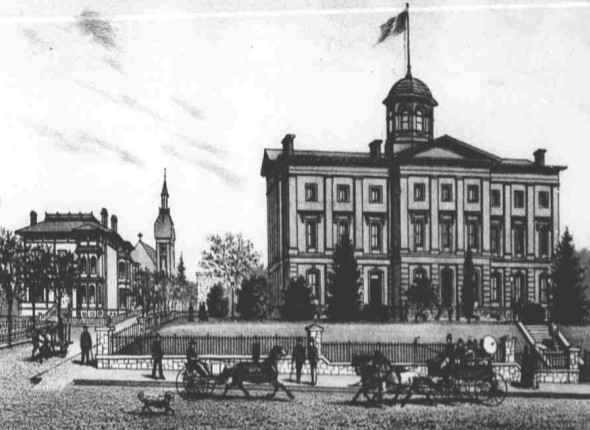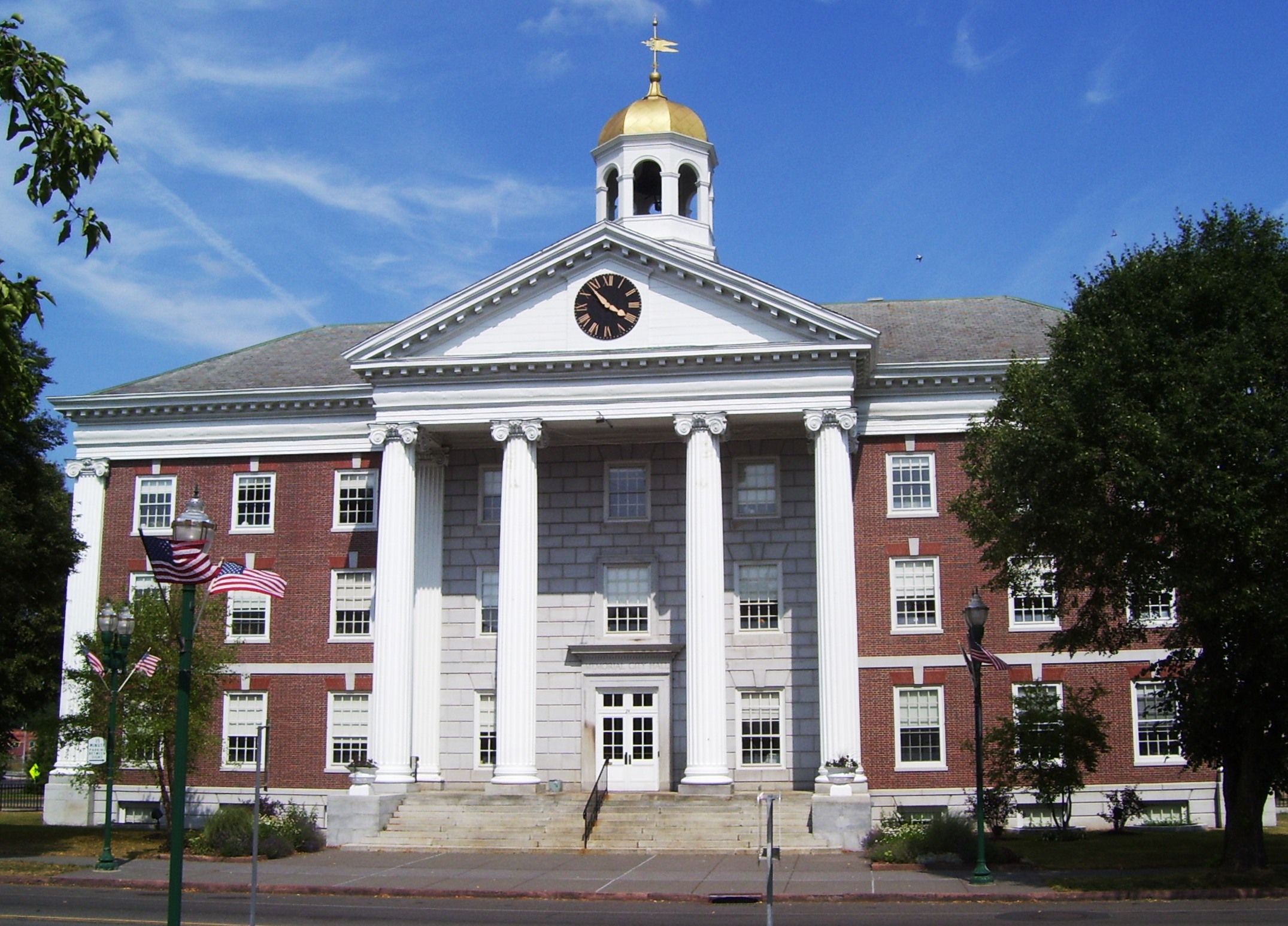|
Failing Office Building
The Failing Office Building is a building in downtown Portland, Oregon, United States that was listed on the National Register of Historic Places on October 31, 2007. The building was built during the rapid growth in Portland's business district after the Lewis and Clark Centennial Exposition in 1905. It was built with six stories in 1907, with a six-story addition in 1913. It features a reinforced steel-frame structure with facades of yellow brick and glazed terra cotta. The Failing Office Building is currently known as The 620 Building. History The building was built for Henry Failing, the fifteenth mayor of Portland. He was the son of Josiah Failing, also a mayor of Portland. It was originally named the Gevurtz Building, for the ground-floor Gevurtz Furniture Company. In 1918, the Portland Gas and Coke Company signed a lease with the Failing estate, at which time it was named the Gasco Building. Portland Gas and Coke moved its operations to the Public Service Buildi ... [...More Info...] [...Related Items...] OR: [Wikipedia] [Google] [Baidu] |
Portland, Oregon
Portland (, ) is a port city in the Pacific Northwest and the largest city in the U.S. state of Oregon. Situated at the confluence of the Willamette and Columbia rivers, Portland is the county seat of Multnomah County, the most populous county in Oregon. Portland had a population of 652,503, making it the 26th-most populated city in the United States, the sixth-most populous on the West Coast, and the second-most populous in the Pacific Northwest, after Seattle. Approximately 2.5 million people live in the Portland metropolitan statistical area (MSA), making it the 25th most populous in the United States. About half of Oregon's population resides within the Portland metropolitan area. Named after Portland, Maine, the Oregon settlement began to be populated in the 1840s, near the end of the Oregon Trail. Its water access provided convenient transportation of goods, and the timber industry was a major force in the city's early economy. At the turn of the 20th centu ... [...More Info...] [...Related Items...] OR: [Wikipedia] [Google] [Baidu] |
Ion Lewis
Ion Lewis (1858-1933) was a founding member of a Portland architectural firm Whidden & Lewis that was formed around the beginning of the 20th century. The firm was formed with partner William M. Whidden. Their residential buildings were mostly in the Colonial Revival style, while their commercial buildings were primarily in the twentieth-century classical style. The commercial buildings often featured brick, along with terra cotta ornamentation. Many of their buildings are listed on the National Register of Historic Places (NRHP). Lewis was born March 26, 1858, in Lynn, Massachusetts. He attended the Massachusetts Institute of Technology, after which he worked for Peabody & Stearns. In 1882 he formed a partnership with Henry Paston Clark, but moved west soon afterward. He worked in Chicago before going to Portland in 1889, where he formed a partnership with Whidden, a former MIT classmate. Although Whidden died in 1929, Lewis continued the firm of Whidden & Lewis until his own de ... [...More Info...] [...Related Items...] OR: [Wikipedia] [Google] [Baidu] |
National Register Of Historic Places In Portland, Oregon
National may refer to: Common uses * Nation or country ** Nationality – a ''national'' is a person who is subject to a nation, regardless of whether the person has full rights as a citizen Places in the United States * National, Maryland, census-designated place * National, Nevada, ghost town * National, Utah, ghost town * National, West Virginia, unincorporated community Commerce * National (brand), a brand name of electronic goods from Panasonic * National Benzole (or simply known as National), former petrol station chain in the UK, merged with BP * National Car Rental, an American rental car company * National Energy Systems, a former name of Eco Marine Power * National Entertainment Commission, a former name of the Media Rating Council * National Motor Vehicle Company, Indianapolis, Indiana, USA 1900-1924 * National Supermarkets, a defunct American grocery store chain * National String Instrument Corporation, a guitar company formed to manufacture the first reso ... [...More Info...] [...Related Items...] OR: [Wikipedia] [Google] [Baidu] |
Office Buildings Completed In 1913
An office is a space where an organization's employees perform administrative work in order to support and realize objects and goals of the organization. The word "office" may also denote a position within an organization with specific duties attached to it (see officer, office-holder, official); the latter is in fact an earlier usage, office as place originally referring to the location of one's duty. When used as an adjective, the term "office" may refer to business-related tasks. In law, a company or organization has offices in any place where it has an official presence, even if that presence consists of (for example) a storage silo rather than an establishment with desk-and-chair. An office is also an architectural and design phenomenon: ranging from a small office such as a bench in the corner of a small business of extremely small size (see small office/home office), through entire floors of buildings, up to and including massive buildings dedicated entirely t ... [...More Info...] [...Related Items...] OR: [Wikipedia] [Google] [Baidu] |
Office Buildings In Portland, Oregon
An office is a space where an organization's employees perform administrative work in order to support and realize objects and goals of the organization. The word "office" may also denote a position within an organization with specific duties attached to it (see officer, office-holder, official); the latter is in fact an earlier usage, office as place originally referring to the location of one's duty. When used as an adjective, the term "office" may refer to business-related tasks. In law, a company or organization has offices in any place where it has an official presence, even if that presence consists of (for example) a storage silo rather than an establishment with desk-and-chair. An office is also an architectural and design phenomenon: ranging from a small office such as a bench in the corner of a small business of extremely small size (see small office/home office), through entire floors of buildings, up to and including massive buildings dedicated entirely to one c ... [...More Info...] [...Related Items...] OR: [Wikipedia] [Google] [Baidu] |
National Register Of Historic Places Listings In Southwest Portland, Oregon
Current listings Former listings Notes References {{NRORextlinks, PDX Southwest Portland, Oregon Southwest South Portland, Oregon ... [...More Info...] [...Related Items...] OR: [Wikipedia] [Google] [Baidu] |
Architecture In Portland, Oregon
Portland architecture includes a number of notable buildings, a wide range of styles, and a few notable pioneering architects. The scale of many projects is relatively small, as a result of the relatively small size of downtown-Portland blocks (200 feet by 200 feet) and strict height restrictions enacted to protect views of nearby Mount Hood from Portland's West Hills. Although these restrictions limit project size, they contribute to Portland's reputation for thoughtful urban planning and livability. Many older buildings have been preserved and re-used, including many glazed terra-cotta buildings. Portland is a leader in sustainable architecture and is known for its focus on urban planning. As of 2009, Portland has the second highest number of LEED-accredited "green" buildings of any city in the U.S., second only to Chicago. Architects Well-known architect Pietro Belluschi began his career in Portland with the prolific firm of A.E. Doyle, leaving his imprint upon the city u ... [...More Info...] [...Related Items...] OR: [Wikipedia] [Google] [Baidu] |
JJ Newberry
J. J. Newberry's was an American five and dime store chain in the 20th century. It was founded in Stroudsburg, Pennsylvania, United States, in 1911 by John Josiah Newberry (1877–1954). J. J. Newberry learned the variety store business by working in stores for 17 years between 1894 and 1911. There were seven stores in the chain by 1918. John Josiah Newberry John Josiah Newberry (September 26, 1877 – March 6, 1954) was born in Sunbury, Pennsylvania, Newberry first worked in the railroad business before joining retail store Fowler, Dick and Walker in 1894. In 1899 he joined S. H. Kress & Co. where he stayed until 1911. He founded the J. J. Newberry chain of five and dime stores in Stroudsburg, Pennsylvania, in 1911. The first store was a success, and he opened a branch in Freeland, Pennsylvania in 1912. After 1919 he managed the company with his brothers Edgar A. Newberry and C.T. Newberry. At the time of Newberry's death (1954), the J.J. Newberry chain had 475 stores. J. J. Ne ... [...More Info...] [...Related Items...] OR: [Wikipedia] [Google] [Baidu] |
Glazed Architectural Terra-cotta
Glazed architectural terra cotta is a ceramic masonry building material used as a decorative skin. It was popular in the United States from the late 19th century until the 1930s, and is still one of the most common building materials found in U.S. urban environments. It is the glazed version of architectural terracotta; the material in both its glazed and unglazed versions is sturdy and relatively inexpensive, and can be molded into richly ornamented detail. Glazed terra-cotta played a significant role in architectural styles such as the Chicago School and Beaux-Arts architecture. History The material, also known in Great Britain as faience and sometimes referred to as "architectural ceramics", was closely associated with the work of Cass Gilbert, Louis Sullivan, and Daniel H. Burnham, among other architects. Buildings incorporating glazed terra-cotta include the Woolworth Building in New York City and the Wrigley Building in Chicago. Glazed architectural terra-cotta off ... [...More Info...] [...Related Items...] OR: [Wikipedia] [Google] [Baidu] |
Colonial Revival Architecture
The Colonial Revival architectural style seeks to revive elements of American colonial architecture. The beginnings of the Colonial Revival style are often attributed to the Centennial Exhibition of 1876, which reawakened Americans to the architectural traditions of their colonial past. Fairly small numbers of Colonial Revival homes were built c. 1880–1910, a period when Queen Anne-style architecture was dominant in the United States. From 1910–1930, the Colonial Revival movement was ascendant, with about 40% of U.S. homes built during this period in the Colonial Revival style. In the immediate post-war period (c. 1950s–early 1960s), Colonial Revival homes continued to be constructed, but in simplified form. In the present-day, many New Traditional homes draw from Colonial Revival styles. While the dominant influences in Colonial Revival style are Georgian and Federal architecture, Colonial Revival homes also draw, to a lesser extent, from the Dutch Colonial ... [...More Info...] [...Related Items...] OR: [Wikipedia] [Google] [Baidu] |
William M
William is a masculine given name of Norman French origin.Hanks, Hardcastle and Hodges, ''Oxford Dictionary of First Names'', Oxford University Press, 2nd edition, , p. 276. It became very popular in the English language after the Norman conquest of England in 1066,All Things William"Meaning & Origin of the Name"/ref> and remained so throughout the Middle Ages and into the modern era. It is sometimes abbreviated "Wm." Shortened familiar versions in English include Will, Wills, Willy, Willie, Liam, Bill, and Billy. A common Irish form is Liam. Scottish diminutives include Wull, Willie or Wullie (as in Oor Wullie or the play ''Douglas''). Female forms are Willa, Willemina, Wilma and Wilhelmina. Etymology William is related to the German given name ''Wilhelm''. Both ultimately descend from Proto-Germanic ''*Wiljahelmaz'', with a direct cognate also in the Old Norse name ''Vilhjalmr'' and a West Germanic borrowing into Medieval Latin ''Willelmus''. The Proto-Germani ... [...More Info...] [...Related Items...] OR: [Wikipedia] [Google] [Baidu] |



.jpg)

